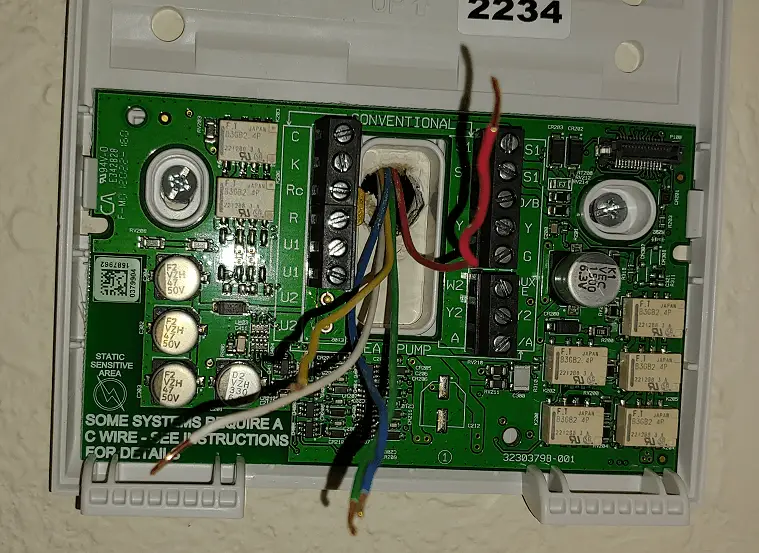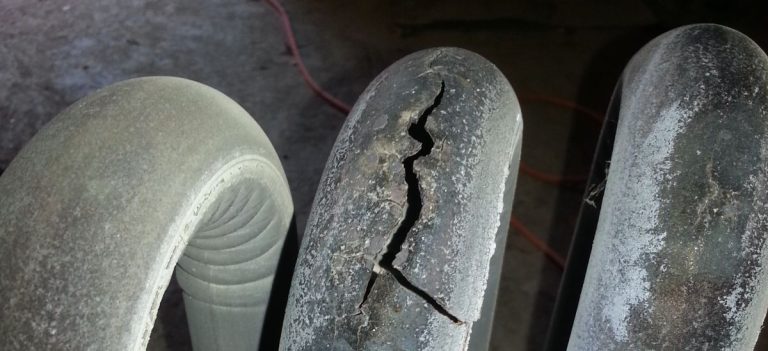My Furnace Is Leaking Water, What Can I Do?
If your furnace is leaking water, it could be for multiple reasons. I thought that if I listed a few, one might make sense and apply to your situation:
This is a very generic question to ask. I can’t answer your question without more information from you. I have questions such as: Is it winter or summer and do you have an 80% or a 90% efficient gas furnace or maybe an electric or even an oil furnace with air conditioning?
You can scroll down through the headings and find your answer quicker unless you just like reading my content and becoming more knowledgeable . As you read on you will see why I need more information from you to give you the right answer.
So I have tried to accomplish the impossible and answer the question as it applies to most types of furnaces in both winter and summer.
This is important. When I discover what type of furnace you have and then choose the season during which the leak happens, then and only then can I give you reasons why your furnace might be leaking water. Hope that makes sense?
First Of All, How Can You Tell What Type Of Furnace You Have?
An 80% efficient gas furnace is relatively easy to identify. The exhaust vent or flue pipe that leaves the furnace and vents outside is made of metal pipe. An 80% efficient furnace includes all those that are rated in the 80’s of percentile, it can vary slightly.
If you have a really old gas furnace it’s efficiency can be much lower, but for purposes of this article the results are identical when it comes to leaks.
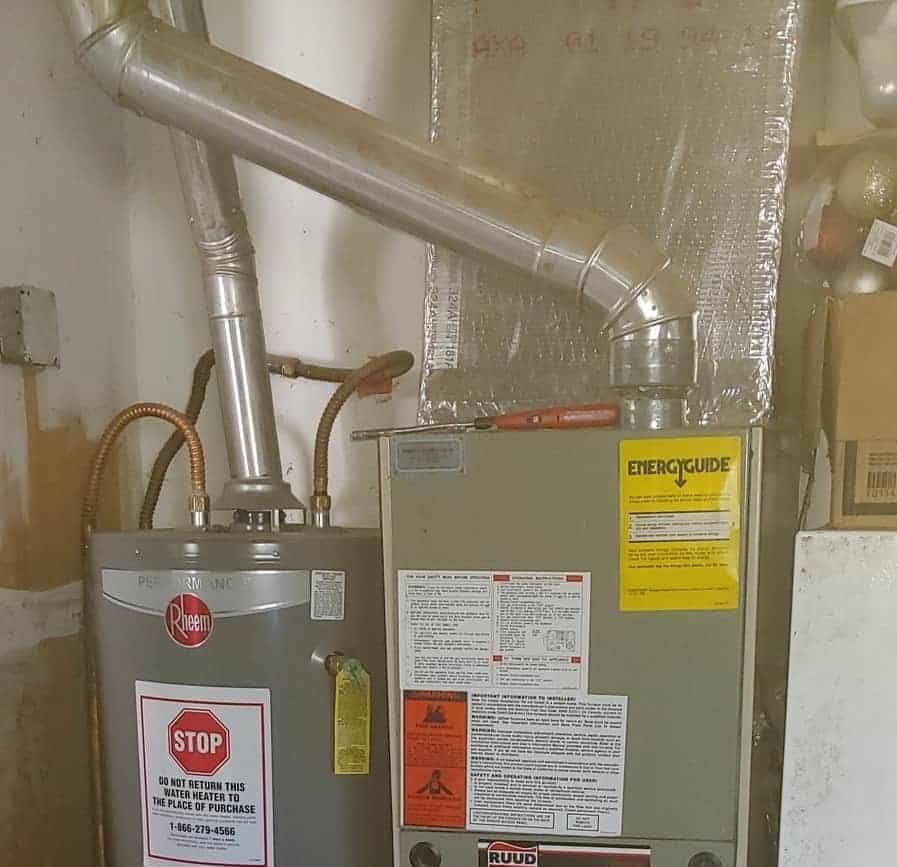
A 90% efficient gas furnace vents in PVC pipe. Normally 2″ or 3″ pipe. Sometimes a 90% efficient gas furnace will vent using two PVC pipes where one pipe is an exhaust and the other is an air inlet bringing air into the burner (combustion air) from outside.
And like the the image below some may only use a single pipe. The one pipe systems draw combustion air (air for the gas flame) from the room where the furnace is located. A two pipe system draws it combustion air from outside.
Remember that my reference to a 90% efficient furnace includes all high efficiency gas furnaces clear up the 97% efficient ones. Only 3% of the heat created goes out the flue. Haven’t heard of a 100% efficient gas furnace yet but 97% is pretty darn good, don’t you think?
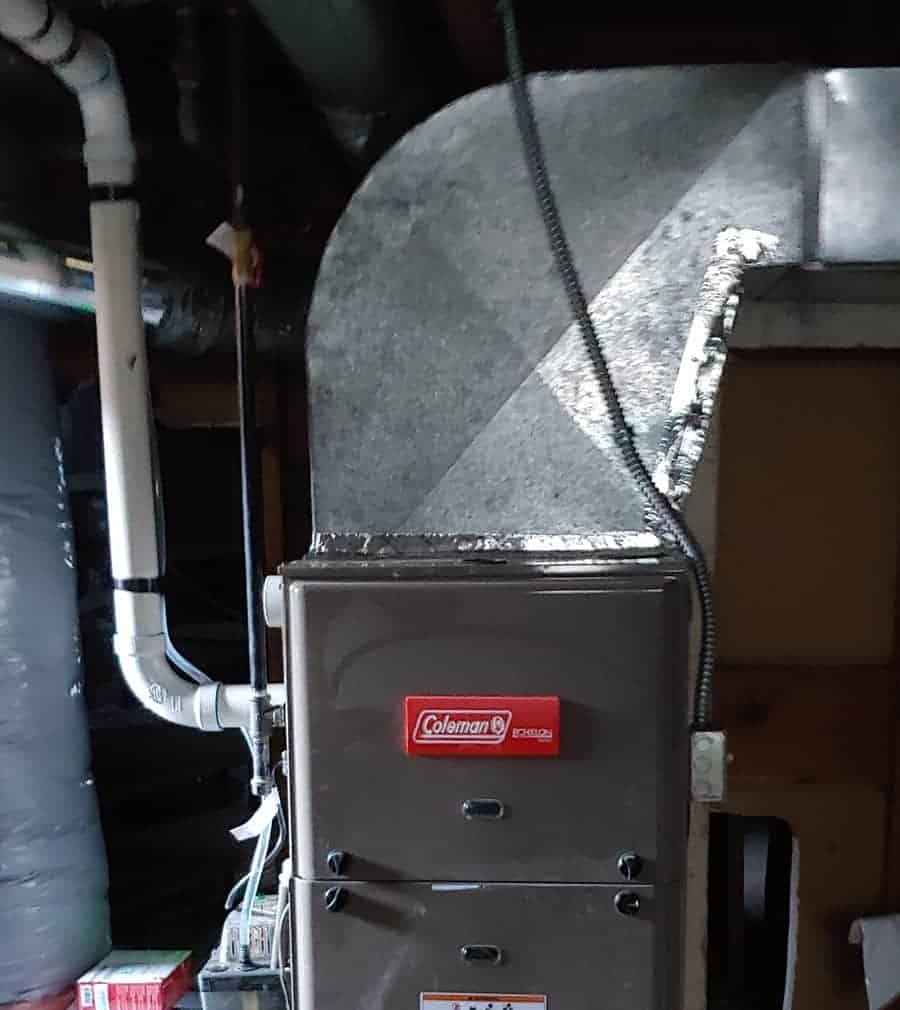
Also if you have a 90% (or more) efficient furnace you will likely see these vent pipes (below) on the outside of you home. They could even be protruding out the top of a chimney that was once used for something else but now used as a chase way for your furnaces PVC venting.
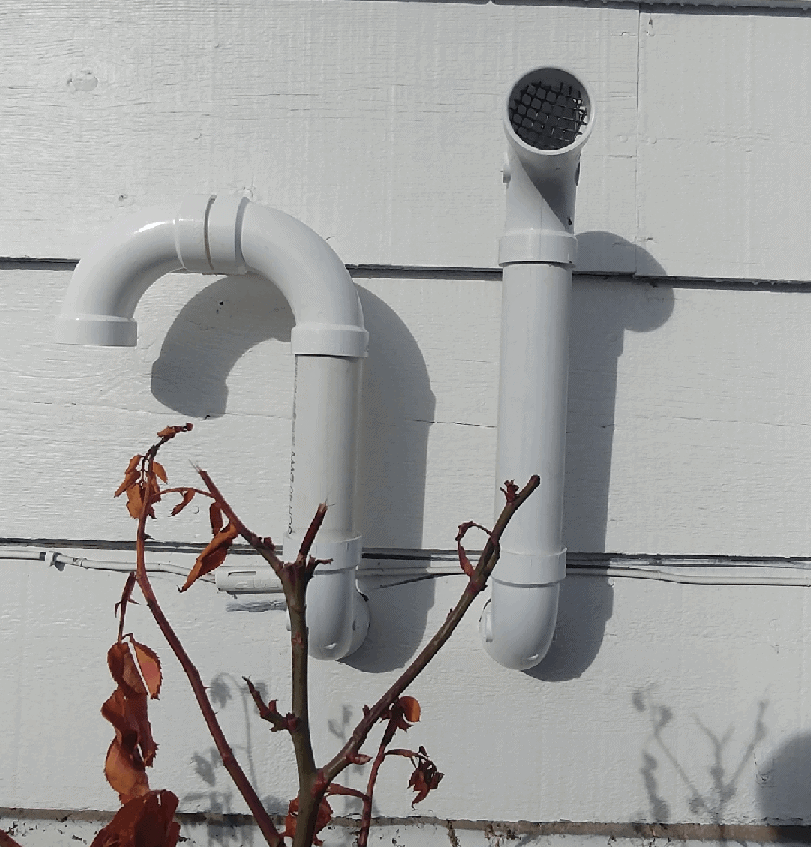
Again, you can have either one or two vent pipes depending on the installation requirements.
How To Identify An Electric Furnace
Electric furnaces are relatively easy to identify. There is no venting. You will have no gas piping to the furnace. And unless you have other gas appliances in the house, you don’t receive a gas bill in the mail each month or have a propane service filling a tank outside.
Although I did have a vacation home that the only gas appliance was a propane range. So you could have natural gas or propane and have an electric furnace. After going through this article you are going to be a more intelligent home owner, right?
There Are A Couple of Reasons Why A Furnace Is Leaking Water
I can only think of two reasons that an 80% furnace can leak water in the summer.
- If your unit is supporting an air conditioner or cooling unit (AC) then you have an ac coil leaking down and into the furnace.
- The vent pipe going up and through the roof is leaking during a summer rain. It may appear to be leaking from the furnace but is more likely a leak coming through the venting/roof.
There are certain rules of installation that apply to having a cooling coil on a gas furnace.
The cooling coil must always be located after the furnace in the direction of air flow or down wind from the furnace. Heat exchangers in gas furnaces can fail prematurely if cooling coils are placed on the wrong end of a gas furnace.
The three main types of installations are up flow, down flow, and horizontal. With an up flow installation the cooling coil has to be on top of the furnace. A down flow unit must have the coil beneath the furnace. And for horizontal units the coil should be on the discharge side or supply side of the furnace.
So if the ac coil is on top of the furnace, water leaking from the ac coil in summer can appear to be leaking from the furnace.
Why Is My 80% Gas Furnace Leaking Water In The Winter?
Melting snow or rain could be leaking down the flue pipe. Water has such a unique way of hiding it’s source. Make sure that it’s source is not some plumbing hiding it’s leak behind some ductwork.
Those are about the only reasons I can think of that would cause a leak to look like it was coming from an 80% efficient gas furnace in the winter time.
My 90% Efficient Gas Furnace Is Leaking Water In The Summer Time
This furnace would have the same answer as an 80%er in the summer. It could only be a summer rain or an air conditioner causing the leak and the water leak is trailing down into and out of the gas furnace.
Somehow you have to find the source. It can be quite exasperating. I am currently fighting a leak in my covered patio. Two different roofers thought they’d fixed the leak. Finally I thought I had it and now again in the summer of 2021 it is leaking again.
My 90% Efficient Gas Furnace Is Leaking Water In The Winter Time
These 90% efficient gas furnaces are the worst culprit when it comes to leaks because they are a condensing furnace. Condensing furnaces create water. The 90%+ efficiency is gained by the use of a recuperation coil inside the furnace (among other things).
The recuperation coil has the flue gases (the burnt fuel going out the PVC pipe) passing through it’s sealed piping and air (your heated air for heating the house) passing over the sealed piping. Air through a coil like the radiator in your car is a coil.
This is why it can be vented in PVC. The temperature of the flue has become so low that reaches the due point and condenses into, you guessed it, WATER. And not just ordinary water, but a very caustic water.
It will destroy the inside of a furnace if left unchecked.
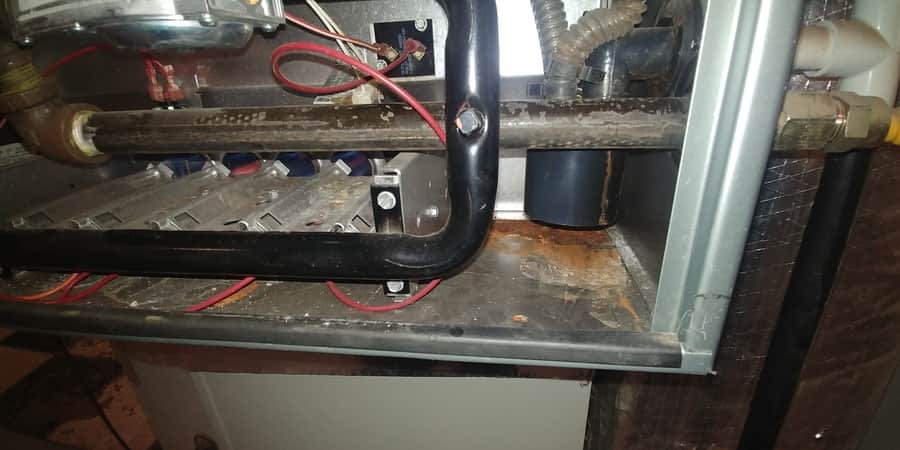
The best way to repair this damage is to apply a rust stopper. I do vintage auto restoration and rust is no stranger to me. If I don’t cut it out I apply a rust stopper. Rust stoppers have a way of chemically changing the rust to prevent further damage.
My favorite go to rust stopper is Permatex 81773 Rust Treatment, you can see it here on Amazon.com. It just paints on and dries to a shinny black surface that you can easily paint over.
Preventative maintenance is always best and the easy way to stop this rust early is to just remove the doors to your furnace and take a gander inside. If there is a leak you can usually see it directly. Just follow the puddle up to the drip, right.
Conclusion: Condensation Pumps And Drain Lines
With all 90% efficient gas furnace both with and without an air conditioner, you will find a drain line leaving the furnace area. Most commonly in 3/4 white PVC pipe. Sometimes depending on location this drain line will flow into a condensation pump.
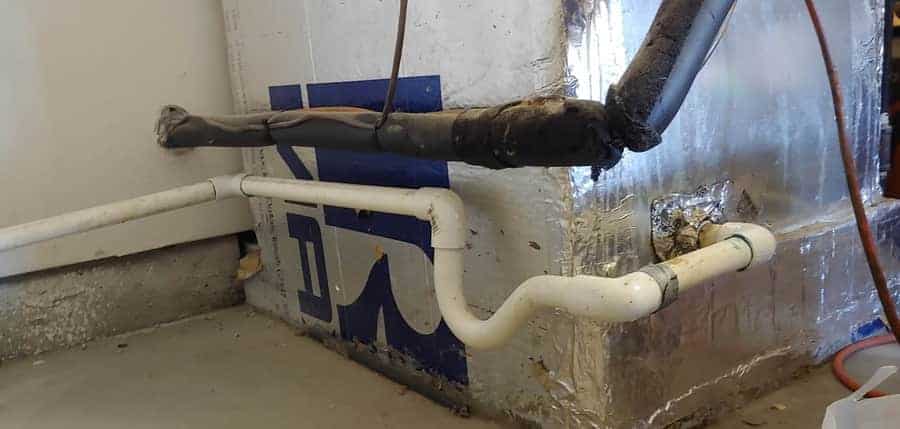
This image shows a novice installation. Ever seen water flow uphill? Every summer this customer would hear gurgling sounds coming from there kids bedroom duct. The condensate would overflow into the duct work and fill the can under the furnace. Eventually filling the duct.
Learn all you can about your system. What things are called. Where the come from and where the go to. I’ve tried my best to offer you some answers, but needless to say:
“There are eight million stories in the naked city. This has been one of them.”

